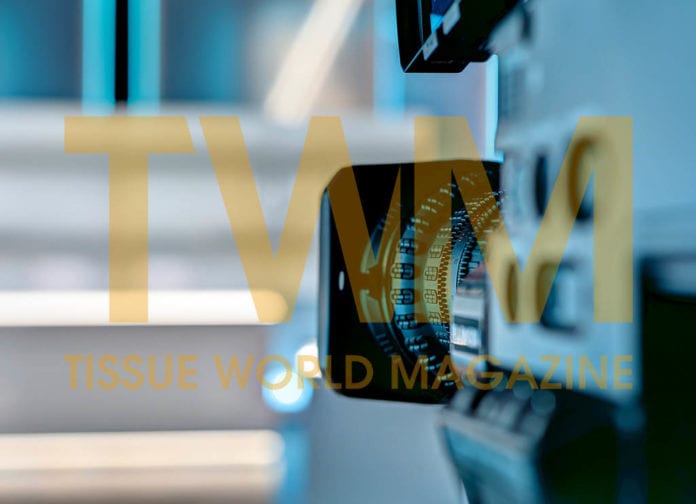TWM’s annual Projects Survey charts all new capacity being added, ordered or in final planning stages during 2019-2020, as well as noting any projects already planned for 2021.
All the figures in the survey are based on the best information provided and this has included TWM’s own extensive research as well as relying on reliable responses from the many companies asked to detail their present and future developments. Additionally, some companies declined to comment at this time and there are also a substantial number of confidential projects, where the company and country is not announced.
A crucial part of compiling the report also includes first-hand knowledge gained
by TWM from the many visits to tissue mills around the world for our bimonthly Country Reports analysis, which during 2019 included face-to-face interviews with your peers and competitors in the USA, France, Germany, Spain, the United Kingdom and Poland. The visits give TWM a unique insight into why that region and its tissue players are investing – or not, and how and on what they’re spending their money.
It needs also be noted that for this year, as with last, many of the projects are subject to revision as, in many cases, information was not provided because it was deemed commercially sensitive or subject to financial uncertainty. It’s also the case that a distinctive feature of this time in the cyclical development of tissue production is marked by the timely closure of old facilities to make way for the new.
In some cases, delayed start-ups have meant projects have been repeated from last year’s survey; some of the ‘new’ capacity announced this year in fact includes some of last year’s estimate.
And lastly, the survey is solely interested in complete tissue machine projects that will increase tissue capacity, rather than the numerous smaller rebuilds or press substitutions around the world that won’t substantially impact capacity.
With the above in mind, 2019 records a total of 101 new tissue projects globally that have started up or are expected to start-up in the next couple of years. This is down from 115 recorded for 2018, 121 projects in 2017, 111 in 2016, 126 in 2015 and the 146 recorded in 2014.
The main change over recent years is that growth in China in 2018 was only half of that recorded in 2017. However, in 2018, the dynamic marketplace has seen world tissue consumption in China larger than that of Western Europe in market size, and approaching the size of North America.
While the survey last year reported 27 projects recorded for start-up in China in 2018 and 2019, this figure now has increased, with China set to start-up 35 of the recorded 101 project noted in 2019, 2020 and 2021. Asia Pulp and Paper was a notable exception after investing in 18 Intelli-Tissue EcoEc 1600 Premium machines. Supplied by PMP, the 18 complete tissue machines will be installed at the company’s new mill in Rudong, Jiangsu. All the machines will be designed and manufactured with the same concept to produce tissue from 11.5gsm up to 22.0gsm at the reel.
Latin America, Asia Far East and Eastern Europe are becoming increasingly important regions. Brazil recorded four projects, down from five in 2018 and the nine reported in 2017. Indonesia also reported four projects while Japan reported seven.
As with last year, the scale of these machines is also significant – a large proportion of these new start-up machines have widths of 5.6m and substantial capacity increases. In 2020, TWM endeavours to bring you more in-depth analysis on tissue mills and their projects across the world with our Country Reports on Scandinavia, Canada, Portugal, Serbia, Turkey and Japan.
CAUTION:
All aggregates taken from the survey should be treated with some caution. While all care has been taken to publish comprehensive data, it is inevitable that projects will be missing or details incomplete. Many projects have also been delayed so start-up data used in the 2018 Project Survey has had to be repeated. We welcome your help to ensure as comprehensive a survey as possible at the end of 2020.
Capacity expansion exceeds organic growth – in some cases double
TWM’s annual Projects Survey is the result of a year-long accumulation of tissue capacity data from companies across the world.
It represents a detailed snapshot of production strategies in all the major tissue regions, set against a global picture of dynamic but shifting trends in consumption, technological advances, raw material costs, radically new energy essentials, and continuing economic uncertainty..
Over-investment and overcapacity remain central issues. The direct cause of overcapacity is anticipation of growth in consumption, a regular and to date predictable event.
China has been the largest tissue producer country since 2015, powered by a decade long consumption growth of 43%, a stark contrast to the US figure at just 12%.
The main change in 2018 was that growth in China was only half of that recorded in 2017, Japan contracted and Western European growth slowed further. Meanwhile, Eastern Europe, Asia Far East and Africa showed more positive developments.
Unmet potential in global terms is immense, but a lot of that potential is confined by cultural habits, even when economic limits are present. India, the great untapped market, will be a tissue bonanza if – and there are no real signs that will any time soon include a when – its people swing round to that particular western habit.
Announced tissue capacity expansion clearly exceeds organic market growth. In some years, such as 2019, the amount of new capacity coming on stream is double the consumption growth. Closures have helped and will continue to do so in the future, but investment activity is overheated. Major capacity closures could improve outlook, but only marginally in the short-term.
Driven by the continued and in some cases strong growth in consumption benefitting from improving global hygiene standards, ever improving quality products… but there is clear evidence that trade wars, economic uncertainty, ageing machinery being replaced, and Industry 4.0 and 5.0 creativity is allowing for a reassessment and a more stable level being found.


































